Social media platforms are evolving at a fast pace – and so are the tactics to grow on each platform. Adapting a brand’s social media marketing strategies to stay relevant has become inevitable.
Top brands with hundreds of thousands of followers on social media are the industry’s torchbearers and trendsetters.
To level up the social media game, small businesses and personal brands need to understand social media maturity and elicit top brand strategies to go up the ladder.
Plan, schedule, share, and analyze content for 15+ social media channels.

Are you ready to explore social media maturity to ignite your social media growth?
Let’s get into this!
What is social media maturity?
Social media maturity refers to the system developed by a company to create, manage, and analyze its social media content publishing strategy to add a layer of authenticity and perfection.
This system circles practices and procedures related to editorial rules, content best practices, publishing and scheduling criteria, and content quality control.
It’s vital to keep a check-and-balance on the content quality to authenticate content quality, topical relevance, fact-checking, and data accuracy.
When a brand establishes and follows a social media content framework, it keeps leveling up its maturity.
It’s not rocket science to figure out what social media maturity is. We often come across social media campaigns that seem perfectly aligned with their brand’s content strategy.
Social media maturity is all about understanding your brand’s strengths and deploying a plan to care for the right audience using your brand’s strong points.
Here’s an example:

Barry Schwartz is an SEO expert who is known for his articles and tweets about Google algorithm updates. He keeps an eye on every bit of SERP volatility in Google and other search engines.
Barry (aka @Rustybrick) is a perfect example of social media maturity, as he has figured out a niche for himself on social media and driving a ton of attention to his articles, videos, and tweets.
Significance of Social Media Maturity
Successful brands develop plans to achieve excellence in every marketing vertical. To understand the significance of social media maturity, it’s vital to discuss how social media maturity helps brands transform their content outcome and brand positioning in the customers’ minds.
Here are four key points to understand why social media maturity is crucial to a brand’s success on social media:
i. Reflect on the brand’s marketing strategy
Social media maturity defines how smartly a company infuses its culture, norms, and mission into its social media content. A brand’s marketing strategy is directly or indirectly influenced by the values defined by the brand.
Therefore, social media maturity helps carve out a perfect brand marketing strategy for a company or personal brand. Ultimately, the brand’s marketing strategy reflects how effective the infusion of culture and values is in its marketing plan.
Also Read: How to build an effective video marketing strategy [With tips & examples]

James is a domain investor. Take a look at his brand’s marketing strategy on Twitter as his brand name, “James Domains,” is being used everywhere, such as Twitter handle, domain, cover image, and Twitter name.
ii. Help streamline the social media content plan
A powerful social media strategy stands on several pillars, and social media maturity is one of them. It gives the social media team a sense of direction to move forward with the social media content plan.
If a brand doesn’t streamline a relevant, effective social media content plan, its social media strategy will be pointless in terms of audience targeting.
Social Media Content Calendar Stay consistent and organized with Contentstudio’s social media content calendar for marketers and agencies.
Once a brand’s vision is crystal clear from a social media targeting standpoint, it gets easier to shape a winning social media content plan. Hence, that’s how a brand takes one step closer to achieving social media maturity.

Up the Gains is a perfect example of streamlining a social media content plan. Check their Twitter profile as they know who to target, how to attract the target audience, what to share with them, and where people can find them.
iii. Strengthen the social media sales funnel
Even though “engagement” is a fundamental concept of social media, and that’s why most brands and entrepreneurs pay attention to social media platforms, conversion is undoubtedly the biggest reality on social media.
Brands and experts who spend time, energy, and money on social media platforms to help out, entertain, or educate people wouldn’t mind converting some of the followers into paying customers. It’s safe to say that social media maturity is a pathway in the right direction.
Read Up: Content Funnel Conversions-How to Create a Content Funnel that Converts
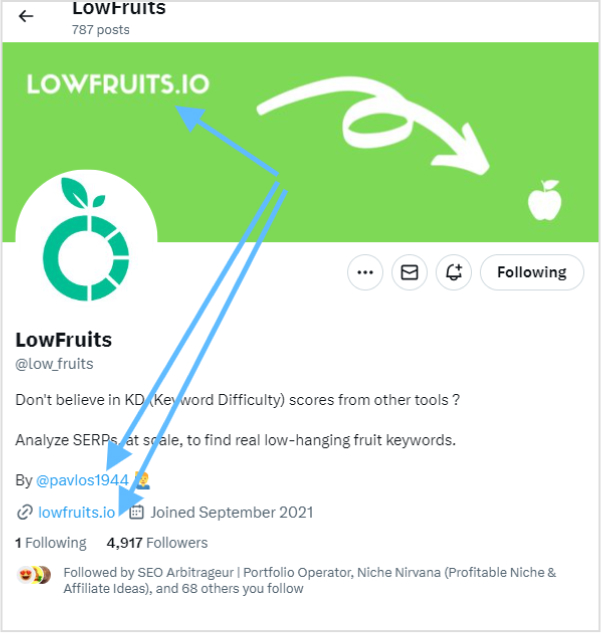
LowFruits is a keyword research tool for bloggers, digital marketers, and SEOs. Check out their Twitter profile, as they’re using Twitter to generate sales by directing social media users to their website. Moreover, they have mentioned the URL on the cover image as well.
iv. Drive a consistent influx of traffic
Brands, organizations, and entrepreneurs have different motives when they spend time on a social media platform. While some might want to build a community, others might want to increase conversion through social media platforms.
Since social media success comes with a lot of attention, brands and influencers can leverage a consistent influx of website traffic to their websites, blogs, or landing pages. This would not have been possible without understanding social media maturity on so many levels.

BuyandSellBusiness.com knows how to drive social media traffic without spamming Twitter posts with their links. Take a glance at one of their tweets where they smartly mentioned the CTA “link in bio” to push viewers to check out their Twitter profile for the URL.
Furthermore, they also have the URL in the Twitter handle, which helps drive website traffic to their homepage.
These were some of the points that symbolize the importance of social media maturity. When brands or entrepreneurs start gaining traction on social media, they tend to focus more on social media platforms. Thus, they understand the importance of social media maturity better than ever.
P.S. From ideas to impact – ContentStudio’s free tools fuel your social media success.
Key elements of the social media maturity model
Social media maturity is transitioning a social media marketing strategy into becoming a vibrant and effective social media policy that benefits the brand in the long run.
Here are the four key elements of the social media maturity model:
1. Invest resources
One of the essential elements of a social media maturity model is the investment of resources, such as time, energy, and money. When a company puts the work into training the social media team, identifying the target audience, and honing in on the social media content strategy, it pays off.
Social media maturity is undoubtedly a step-by-step process, as it doesn’t happen on a whim. Instead, it takes time to make things happen, even if resources are available at their disposal.
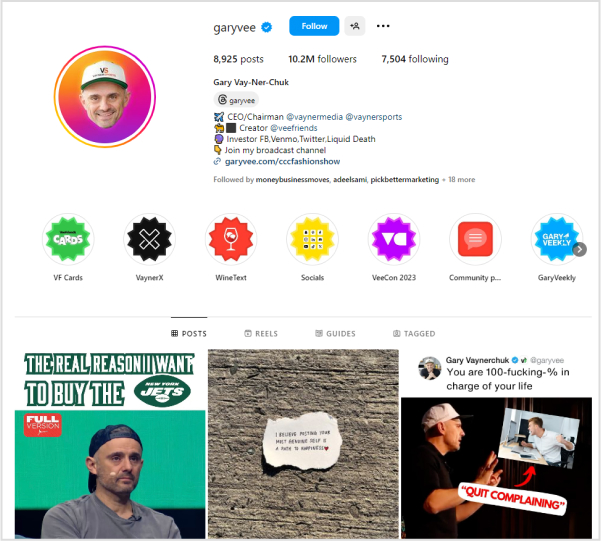
Gary Vee is an entrepreneur, investor, author, and social media influencer. He has been investing time, money, and energy into putting out so much content across multiple social media platforms for years. No wonder he has over 10 million followers on Instagram.
Related Read: How to become a social media influencer?
2. Strategic approach
An important element of social media maturity is the ability to power through from one stage to the next. Every successful social media brand doesn’t become good at social media from day one. Instead, they improve over time.
To achieve significant growth on social media, a brand is required to establish a strategic approach to level up its social media presence.

Tony Hill is a website owner, publisher, and social media expert. He has found his niche around topics like Pinterest and Google Discover to drive website visitors. He mostly talks about these topics on Twitter and in his email newsletter. This strategic approach is working for him.
3. Build processes
The social media evolution of a brand’s social media content strategy doesn’t happen without building processes to get the job done. It may include workflows, SOPs, and a plan of action to pull this off.
So don’t avoid setting the ground rules and motivating the team members to play by the book. The transformation of the brand’s social media profile may be complex initially, but the brand will reap the benefits later.
Anyway, build processes to achieve social media maturity no matter how difficult it looks.

Adam Crookes is using Twitter to showcase his achievement of taking a website from 0 to 189,000 monthly organic visitors. Moreover, he often talks about SEO, content, and website growth on Twitter. The takeaway from his story is that building and following processes takes you to the next level.
4. Consistent effort
Consistency is the key to success regardless of the industry. To create a perfect social media maturity model, one must consistently put in the work. Changing the publishing policies, content style, and content plan won’t help the cause.
So, create long-term social media strategies, especially if things seem to be working regarding engagement, CTR, and conversion.

Dymtro is a blogger and niche website builder. He has been active on Twitter since 2012, which shows that consistency is the key to success and social media maturity.
These are key elements to remember when establishing a social media maturity model.
5 stages of social media maturity
Social media maturity is achieved with consistent effort, efficiency, and dedication, as it’s not a quick-rich scheme. It’s a process of building something praise-worthy over the years.
As a brand or individual goes through the process, it continues to graduate the stages and move up the ladder. Here are five stages of social media maturity:
1. Dormant
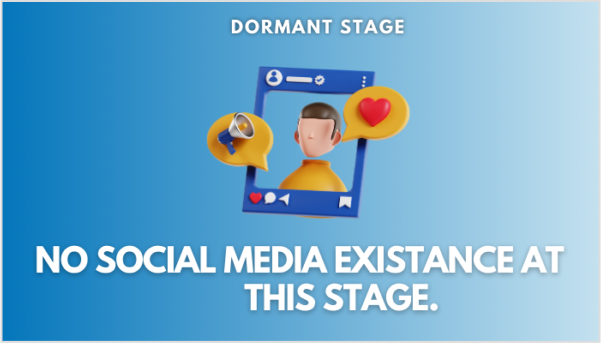
The dormant stage refers to when brands are at a stage where they don’t exist on social media platforms.
Moreover, it’s the stage where brands don’t even pay attention to social media. Most of these brands don’t bother creating social media accounts on major social media platforms.
Some of these brands move to stage two when they realize that social media existence is vital to their digital marketing campaign. However, most of these brands don’t hop on social media platforms.
2. Starters
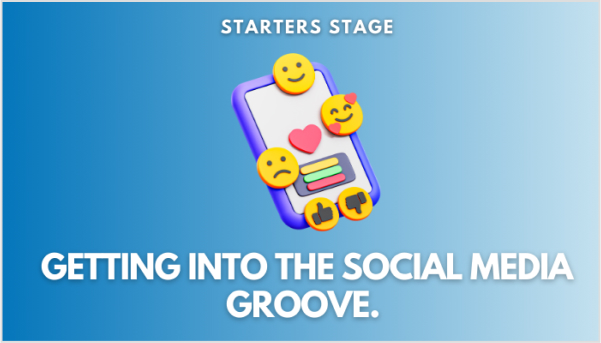
Starters are the brands or individuals who start to creep into the social media arena. These users may initially start on one or two social media platforms and struggle with creating content and getting attention.
The problem most users face at this stage is that they don’t have a social media content plan to follow. More importantly, they don’t know how social media works. They simply get inspired by someone or get random advice to hop on social media, and they join a social media network to see how things work.
3. Evolving
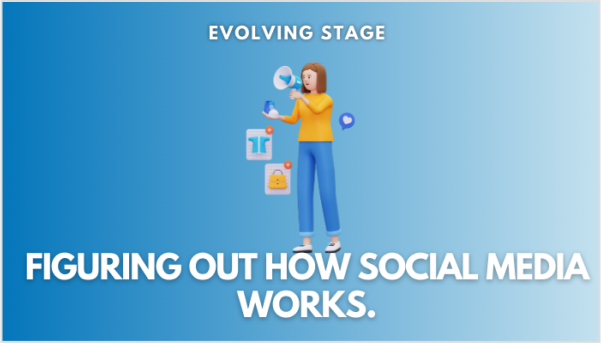
At this stage, the social media users start to figure out the social media platforms they are on and what needs to be done. The brands or individuals who start evolving at this stage are the ones who never gave up on social media and kept on going forward for a few years.
It’s the stage where these users start to understand what brings the audience’s attention, how to engage them, and what type of content does well on social media.
So, these users start gaining attention on at least one social media platform, enough to snowball effect on others.
4. Excelled

Excelled is the social media maturity stage, where a brand or individual has successfully crossed several milestones on social media and is dominating more than one social media platform.
When a user gains momentum, the algorithm favors this user’s content. The reason is that social media platforms follow eyeballs and attention, pushing the content further up and getting more attention.
5. Innovators

Innovators are social media users who have mastered the art of social media growth. They have enough knowledge, expertise, and experience to quickly start over and reach the same or higher level.
These users become trendsetters in the niche and dominate social media platforms without paid advertisements or endorsements. They turn out to be the pioneers in the industry and attract eyeballs wherever they go.
So, these are five social media maturity stages that some top-tier social media users experience. It doesn’t necessarily mean that every successful brand or individual (on social media) gets to the innovators stage anyway.
Analyze your organization’s social media maturity now
Since most social media users aren’t educated on ethics, norms, and standards, this concept of social media maturity would be foreign to them.
One of the purposes of this article was to help the audience understand what social media maturity is and what stage of social media maturity they are at.
It’s of utmost importance to analyze your organization’s social media maturity, especially after one has understood the core idea behind this social media phenomenon.
Understanding social media is imperative in today’s fast-paced world. Otherwise, competitors would dominate the vacant space on social by filling the void.
It begins with identifying your social media maturity level and taking further steps to climb the ladder.
We’ve discussed different social media maturity stages so that every entrepreneur or social media manager can read this content to get the whole idea.
Therefore, it gets easier for them to analyze their company or personal brand’s social media maturity level.
FAQs about social media maturity
Let us answer some of the commonly asked questions about social media maturity:
What are the 5 stages of social media?
The five stages of social media are dormant, starters, evolving, excelled, and innovators.
What are the 3 C’s of social media promotion?
Usually, the 3 Cs of social media promotion are content, community, and conversion.
